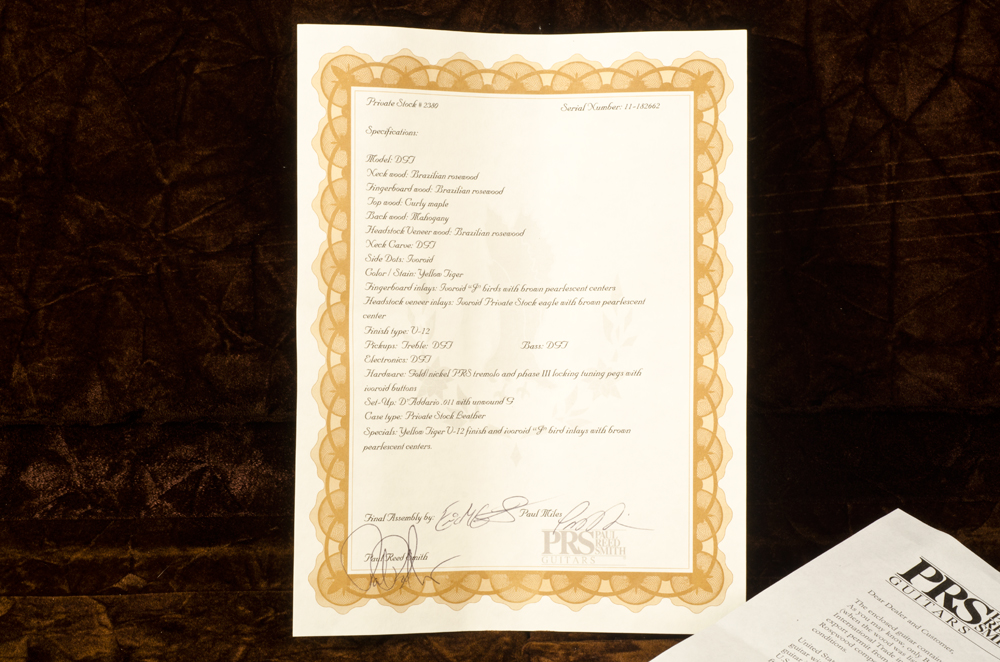Prs Serial Number Handwritten
вторник 09 апреля admin 96
1990 PRS Custom 24 in Good Condition10 Top '10' is imprinted to the left of the serial number (later the '10' was handwritten in ink like.
PRS Dating & Serial Numbers PRS Dating & Serial Numbers > > OLD PAGE This Is A Very Simple Formula PRS serial numbers are very easy to figure out. The only slightly confusing thing is 1985 guitars start with the same number as a 1995 guitar.
1986 guitars start with the same number as a 1996 guitar 1987 guitars start with the same number as a 1997 guitar etc. All you have to remember is, guitars built in 1985 would have a very low number, while guitars built in 1995 would have really high numbers. 5 = 1985 1 = 1991 6 = 1986 2 = 1992 7 = 1987 3 = 1993 8 = 1988 4 = 1994 9 = 1989 5 = 1995 numbers will be over 20,000 after this year 0 = 1990 6 = 1996 7 = 1997 Presumably 1999 will be the same formula; I don't know what they'll do in the year 2000. Were all gonna die then anyway so I guess it doesn't matter. I have heard that in 1999 PRS is building over 100 guitars a day. So the numbers are climbing fast now. I remember when they were barely building 4 guitars a month The Classic Electric or CE model has one extra number inserted after the year designator and before the number of the guitar Example 3 917542 = 17,542nd guitar off the line, it would have been made in 1993.
Possible exceptions Because the bolt on guitars have numbers stamped on them conceivably they could be using 1994 plates up until at least February of 1995. I don't think they throw the preprinted plates away just because the year changes. I am not sure of this but I do remember getting 1992 guitars delivered in 1993 etc. Other ways to tell Important changeover years 1991 -- PRS stopped offering Brazilian rosewood fingerboards. Opinions vary here but I feel that the Indian Rosewood they use is still OK and shouldn't be a reason not to buy a guitar made after 1991.
Rev theory discography torrent. 1991 -- PRS stopped offering real abalone shell as the inlay material on the fingerboard. They went to a high quality, less expensive, but real mother of pearl. 1993 -- PRS came out with their version of a one piece stop tailpiece. This tailpiece is made from white metal with absolutely NO saddle adjustment (not recommended.) The ones used previously were the excellent quality Gibson style Nashville 2 piece system with fully adjustable saddles. I really hate the new PRS Stop Tail Piece 1995 -- PRS stopped using the mother of pearl inlay in favor of an artificial laminate known as “Abalam”.
Still, you have to remember Gibson uses “Mother of Toilet Seat”, which is nothing more than plastic. 1995 -- PRS changed the tremolo system dramatically. The saddles are no longer highly polished and they tend to dull up and tarnish.

The original tremolo was a single piece casting made in the USA, VS. The newer one that is a 2 piece bolted together unit.
1995 -- PRS went to a large long neck heel. This affects the playability of the guitar adversely and also reduces the value of the guitar greatly. (I offer a conversion back to original; on this call for details) 1995 -- PRS changed the wood on their Classic Electric “CE” model from Alder to Mahogany. In this writer's opinion, that was a huge mistake. The guitar lost all of it's high end snap. This cost cutting move was especially dastardly, because it's impossible to visually tell the difference: The wood is painted opaque on most of the models.
I would classify this change as downright dishonesty and fraud. They could have changed the name or something but they did not do that. 1995 -- PRS had several hefty price increases, due to the increasing popularity of the guitar and their inability to produce enough guitars to satisfy the market.
